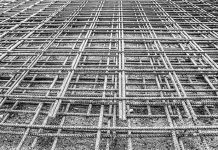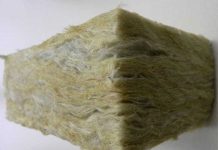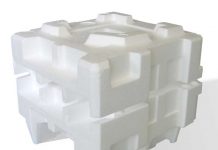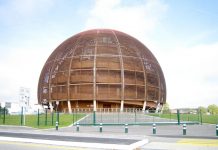Extruded polystyrene insulation (XPS), is a rigid foam board insulation that offers thermal resistance and energy efficiency. It’s made of polystyrene pellets. These pellets are extruded into a dense, closed-cell structure. This manufacturing process results in XPS, a highly effective material at reducing heat transfer and keeping indoor spaces comfortable year-round.
Besides thermal resistance, it has additional properties like moisture resistance, water repellency, durability, versatility, ease of installation, and more.
In the next sections, we’ll talk about these properties, the advantages of using XPS and use areas. We will also talk about the Let’s start with the advantages of extruded polystyrene insulation.
Advantages of Extruded Polystyrene Insulation
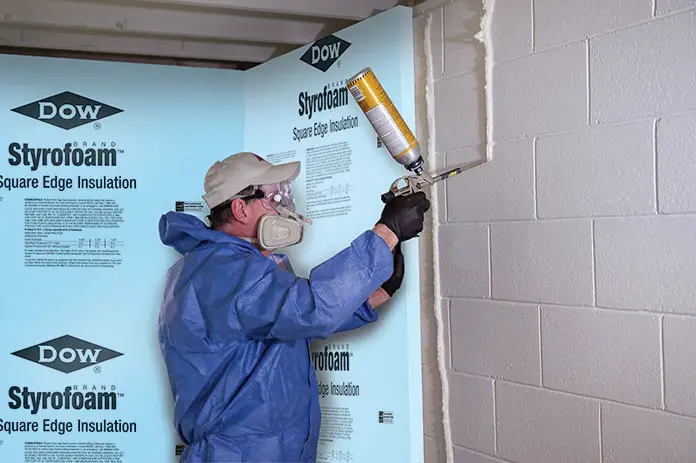
XPS has multiple advantages to offer. Especially if you’re looking for insulation material for your construction project, XPS should be one of the potential candidates on your list. Let’s take a closer look at the properties that make extruded polystyrene foam a popular choice for homeowners and builders.
1. High thermal resistance and energy efficiency
Extruded polystyrene insulation has excellent thermal resistance properties, which means it effectively minimizes heat transfer. Installing XPS in your walls, roofs and floors can significantly reduce energy loss and improve the overall energy efficiency of your building.
This will result in lower heating and cooling costs and a more comfortable indoor environment throughout the year.
2. Moisture Resistance
XPS features strong resistance to moisture and water absorption, unlike some other insulation materials. This makes it an ideal product to use in areas that are prone to high humidity, condensation, or potential water exposure.
Using extruded polystyrene foam board, you can protect your structure against moisture-related issues, such as mold growth, deterioration and compromised insulation performance.
3. Durability
XPS insulation foam is produced to be highly durable and long-lasting. As it has a closed-cell structure, it provides strength and resists compression. This ensures that it can withstand heavy loads without significant degradation of its insulation properties.
Durability in insulation products means that your insulation investment will continue to serve the optimal performance for many years. This may reduce maintenance or replacement costs.
Note that the change in thickness of thermal insulation materials under the influence of pressure significantly affects their thermal resistance.
4. Resistance to mold, mildew, and pests
It is naturally resistant to mold and mildew growth, thanks to its closed-cell structure. This structure doesn’t provide a favorable environment for harmful organisms to thrive.
Furthermore, pests, such as rodents and insects, don’t find XPS material appealing due to its density and composition.
5. Ease of installation and versatility
If you’re not a builder, you can still install XPS. Because the installation of extruded polystyrene foam is a straightforward process.
It does not crumble or split into grains during cutting. This provides ease of use compared to foam materials such as EPS foam.
The rigid foam boards are lightweight and can be cut and shaped to fit various spaces and applications. Whether you’re insulating walls, roofs, or floors, XPS insulation offers versatility and ease of installation, saving you time and effort.
6. Environmental sustainability
XPS products are now manufactured with a focus on environmental sustainability. They often contain recycled content. Moreover, these insulation materials can be recycled at the end of their useful life.
7. Use Conditions
The usage temperature of XPS is between -50 and +75 degrees. So you can use this material in many climates. However, as it is sensitive to sunlight (UV), its surface should be protected from sun rays.
Applications of Extruded Polystyrene Insulation
Extruded polystyrene insulation (XPS) ensures wide-ranging use areas in various construction projects. In this section, we’ll explore these applications in three different project scales. These are residential, commercial and infrastructure constructions.
A. Residential construction:
Wall insulation: XPS insulation is commonly used in exterior walls to help minimize heat transfer and maintain a comfortable indoor temperature. It creates a thermal barrier that reduces energy consumption and increases the overall energy efficiency of your home.
Roof insulation: It’s possible to install XPS insulation on your roof. Thereby, you can prevent heat loss during colder months and limit heat gain in the summer.
This ensures energy savings and helps regulate the temperature in your living spaces. Furthermore, it enhances comfort and reduces reliance on heating and cooling systems.
Floor insulation: Another usage area of XPS is floors. Thus, it increases thermal comfort and reduces noise transmission between different levels of your home.
It also aids prevent moisture intrusion from the ground to ensure a drier and healthier living environment.
B. Commercial construction:
Insulating concrete forms (ICFs): Extruded polystyrene insulation is often used in ICF construction, where foam boards are stacked and used as formwork for concrete walls.
This combination creates a highly energy-efficient and durable building envelope, offering excellent insulation performance and structural strength.
Cold storage facilities: XPS insulation is an ideal choice for cold storage facilities, such as warehouses and refrigerated rooms. Its low thermal conductivity helps maintain stable temperatures, prevent frost formation, and reduce the energy consumption required for cooling.
HVAC ductwork insulation: It can be used to insulate HVAC ductwork, improving energy efficiency and minimizing heat loss or gain during air distribution.
Insulated ducts help deliver conditioned air more effectively, reducing energy waste and ensuring optimal comfort levels.
C. Infrastructure projects:
Road and railway construction: Extruded polystyrene insulation is utilized in road and railway projects to insulate pavements, bridges, and other structures.
It helps prevent frost heave, reduces thermal expansion and contraction, and extends the lifespan of these infrastructure elements.
Bridge and tunnel insulation: XPS insulation provides thermal protection for bridges and tunnels, mitigating temperature fluctuations and preventing the formation of ice or frost on surfaces. It contributes to the longevity and structural integrity of these critical transportation assets.
Foundation and basement insulation: Insulating foundations and basements with XPS insulation helps reduce heat loss and moisture infiltration, creating a more comfortable and energy-efficient living environment. It also prevents potential issues, such as basement dampness and the growth of mold or mildew.
With its diverse range of applications, extruded polystyrene insulation offers effective thermal performance, moisture resistance, and durability.
Whether you’re insulating walls, roofs, floors, or infrastructure elements, XPS insulation can play a crucial role in enhancing energy efficiency. It provides protection against moisture-related problems and ensures long-lasting performance.
Why use thermal insulation in buildings?
The energy performance efficiency of our buildings has a critical importance in terms of both our budget and the carbon dioxide emission caused by the spent heating energy.
In recent years, the concepts of zero energy and sustainable architecture have become quite popular. The biggest reasons for this are the increase in energy consumption expenditures and the signals of insufficiency of energy resources against the increasing world population.
Additionally, it is necessary to look at energy consumption and production not only from an individual perspective but also from a social perspective. Because almost most of the wars in the last century broke out over oil, geopolitical strategies and various energy sources.
As a result of research conducted by the International Energy Agency, our buildings consume half of the electricity and 1/3 of the natural gas. Furthermore, the built environment is one of the biggest (about 1/3) sources of greenhouse gas emissions (2009).
For all these reasons, we should approach zero energy as much as possible in the design of our buildings. One of the most important design decisions to reduce the heating costs of the building is to use the right thermal insulation material.
What is the story of XPS?
Combining its polystyrene content with the homogeneously distributed solid cell structure, the XPS insulation board becomes one of the most effective thermal insulation boards in the building sector.
However, the use of XPS in the construction field was realized as a result of a coincidental discovery. Because extruded polystyrene insulation was produced for use in floating rafts for the American Navy in the 1940s.
For this reason, its first aim in the production was to provide waterproofing for these rafts. It has been discovered that XPS used in the waterproofing of rafts also provides thermal insulation properties.
Thus, the idea of using this material for thermal insulation in the building sector was born. Then, it has become one of the important insulation materials used in our buildings.
FAQ
A: Extruded polystyrene insulation, also known as XPS insulation, is a type of rigid foam board insulation made from polystyrene pellets.
A: XPS offers high thermal resistance, moisture resistance, durability and ease of installation. Compared to other types of insulation, XPS insulation provides excellent insulation performance, resists moisture absorption and has a long lifespan.
A: Yes, it is suitable for both new construction and retrofit projects. It can be used in various applications, such as insulating walls, roofs, floors and foundations.
A: Yes, it is well-suited for high-moisture areas. Its closed-cell structure makes it resistant to moisture absorption, preventing water-related damage and maintaining its thermal performance even in damp conditions.
A: When installed properly, it is considered safe to use. Moreover, it’s non-toxic and non-allergenic. However, during installation, it is important to follow safety guidelines such as using proper protective equipment and ensuring adequate ventilation in confined spaces.
A: It has a long lifespan. When properly installed and maintained, it can last for several decades. Its durable nature and resistance to mold, mildew, and pests contribute to its longevity.
A: Yes, it can be recycled. Many recycling facilities accept XPS insulation for recycling. However, it is important to check with local recycling centers or waste management authorities for specific guidelines and locations.


